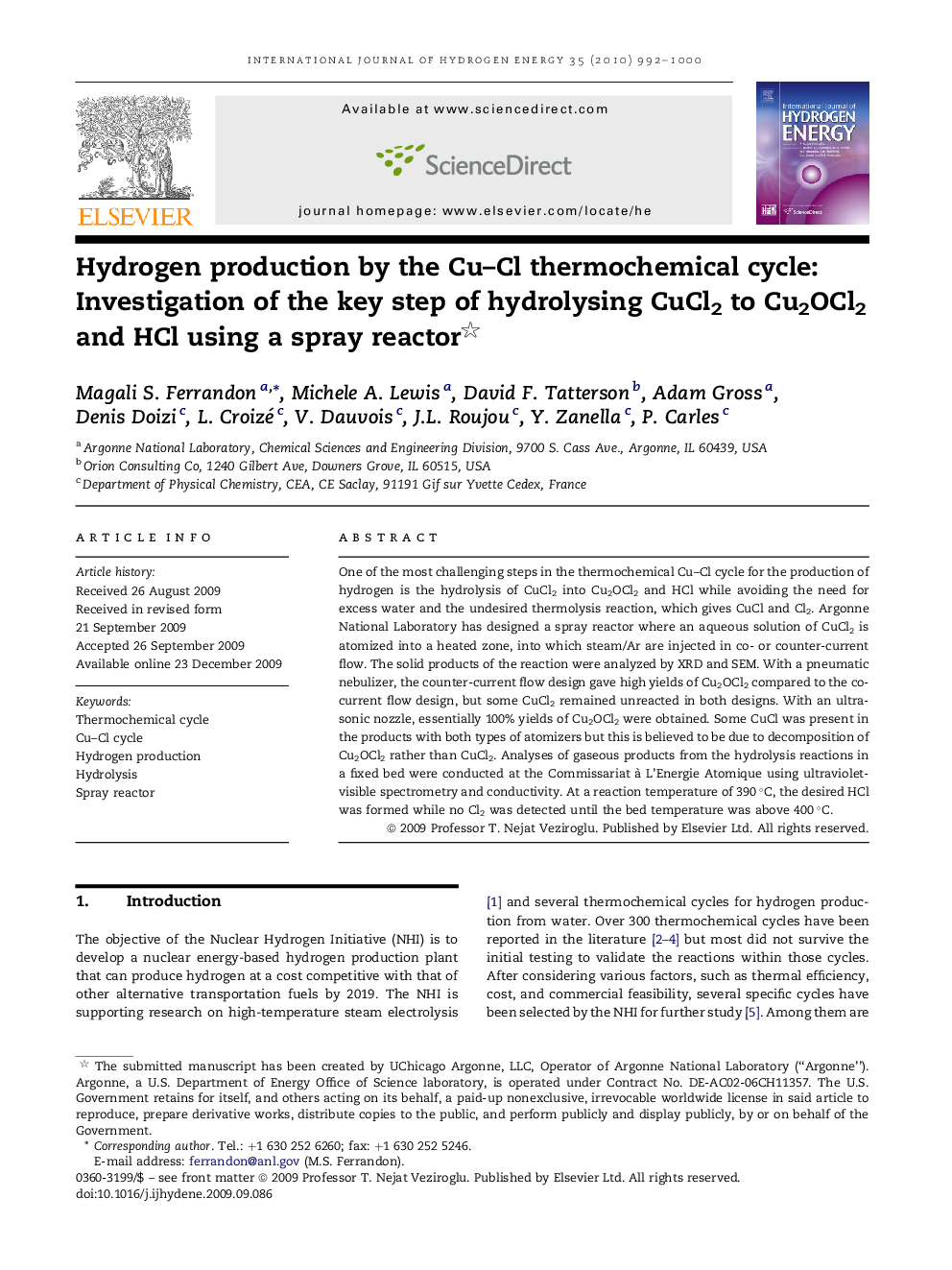| Article ID | Journal | Published Year | Pages | File Type |
|---|---|---|---|---|
| 1273490 | International Journal of Hydrogen Energy | 2010 | 9 Pages |
One of the most challenging steps in the thermochemical Cu–Cl cycle for the production of hydrogen is the hydrolysis of CuCl2 into Cu2OCl2 and HCl while avoiding the need for excess water and the undesired thermolysis reaction, which gives CuCl and Cl2. Argonne National Laboratory has designed a spray reactor where an aqueous solution of CuCl2 is atomized into a heated zone, into which steam/Ar are injected in co- or counter-current flow. The solid products of the reaction were analyzed by XRD and SEM. With a pneumatic nebulizer, the counter-current flow design gave high yields of Cu2OCl2 compared to the co-current flow design, but some CuCl2 remained unreacted in both designs. With an ultrasonic nozzle, essentially 100% yields of Cu2OCl2 were obtained. Some CuCl was present in the products with both types of atomizers but this is believed to be due to decomposition of Cu2OCl2 rather than CuCl2. Analyses of gaseous products from the hydrolysis reactions in a fixed bed were conducted at the Commissariat à L'Energie Atomique using ultraviolet-visible spectrometry and conductivity. At a reaction temperature of 390 °C, the desired HCl was formed while no Cl2 was detected until the bed temperature was above 400 °C.
